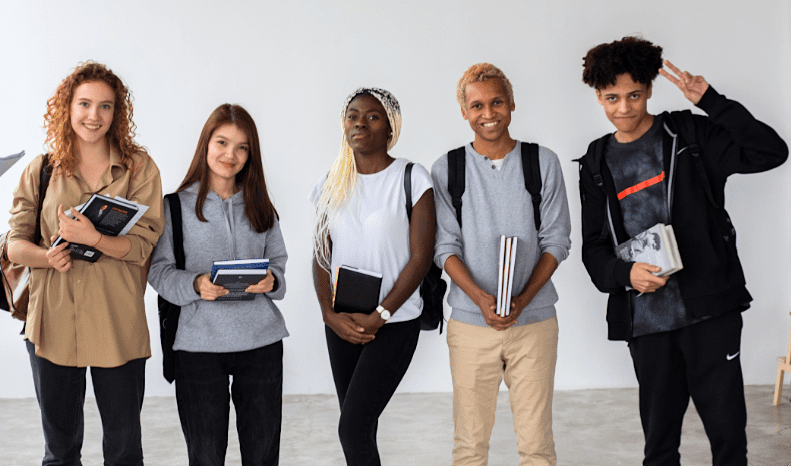Hyperpolarization Has Piqued the Interest of Young Americans
By • March 8, 2021 One Comment 1913

“Dude, did you see Biden closed down the Keystone?” my friend begins, looking up from his phone. A series of groans interrupts him. “Can we not do this right now?” another friend requests. Several others murmur their agreement.
We are sitting in the large tent that is our new cafeteria during hybrid-alternating-cohort-mode school, and memories of recent political debates have suddenly jumped to the forefront of everyone’s mind — political debates that have inflamed tempers and ruined moods.
This inability to talk civilly about politics is something that we teenagers and young adults across the country are becoming increasingly familiar with. It is the world we have grown up in.
If there is one good that has come out of the angry haze that currently surrounds politics, it is that everyone, even the kids, wants to get involved.
Young Americans spoke out in the 2020 election, and our voices were heard. We pleaded with potential voters over the phone, screamed our lungs out at marches and, most importantly, showed up en masse at the polling booths.
Our high schools and colleges became beacons for political discourse and discussion. Political action groups were formed, clubs were assembled — young Americans were plugged in, motivated and excited to be a part of something bigger than ourselves.
Don’t believe me? The voter turnout studies are reporting that 53 to 55 percent of registered 18-to-29-year-olds appear to have voted in the 2020 election. That may be the highest turnout rate of young people ever recorded in the modern era of politics.
This past December, I volunteered for the campaign of Sen. Jon Ossoff (D-Georgia). I was born and raised in D.C., but half of my family lives in Georgia. If there is one thing we learned from 2020, it’s how to get involved remotely.
As I logged onto Zoom for my first orientation meeting, I braced myself, fully expecting to be scoffed at by masses of older and more experienced volunteers. Instead, I was greeted by a sea of young faces — young faces who seemed every bit as excited as I was.
Historically, this level of involvement among young American voters has been scarce, if not nonexistent. In recent history, the U.S. has had one of the lowest youth voter turnouts of anywhere in the world.
“In U.S. presidential elections, about 70 percent of voters 60 and up have turned out — which is nearly three times the rate of Americans between 18 and 29,” University of Virginia public policy professor John Holbein wrote recently in the Conversation.
So, why is this explosion in youth voter turnout happening now?
Malcolm X once said that when people “get angry, then they can bring about a change.” Right now, people are very angry. Young voters who were nowhere to be found in any other election didn’t magically materialize in 2020; they were enticed to the polling booths by that anger. And they were clearly the most angry: young voter turnout was by far the most improved from 2016 of any age demographic.
It was never “settle for Obama” or “settle for Trump,” but it was “settle for Biden.” People voted out of anger against the other side, not out of passion for their own. During the Super Tuesday primary of 2020, fewer than one in five youth voters cast their ballots. There was no ire to be directed at the opposite side, therefore there was no interest.
My generation is the most angry because we have grown up in a world where deep division and bitterness have been the norm. For many of us, it seems as if this great animosity is something that naturally comes along with politics. Our leaders, our TV pundits, even our families have constantly set that example for us.
It shouldn’t have to take a country so divided that protests have made their way onto the Senate floor for Americans to want to get involved. Perhaps if more Americans took the time to hear each other out, our lines of division wouldn’t run so deep.
Maybe it’s time for me to call up my friend and ask him what he was going to say about the Keystone Pipeline that day at lunch.
Georgetown resident James Boyle is a member of the Class of 2022 at St. Albans School and a staff writer for the St. Albans News.


Good piece, James! Keep on this journalism track! (From a nearly retired college journalism professor/former journalist in California)